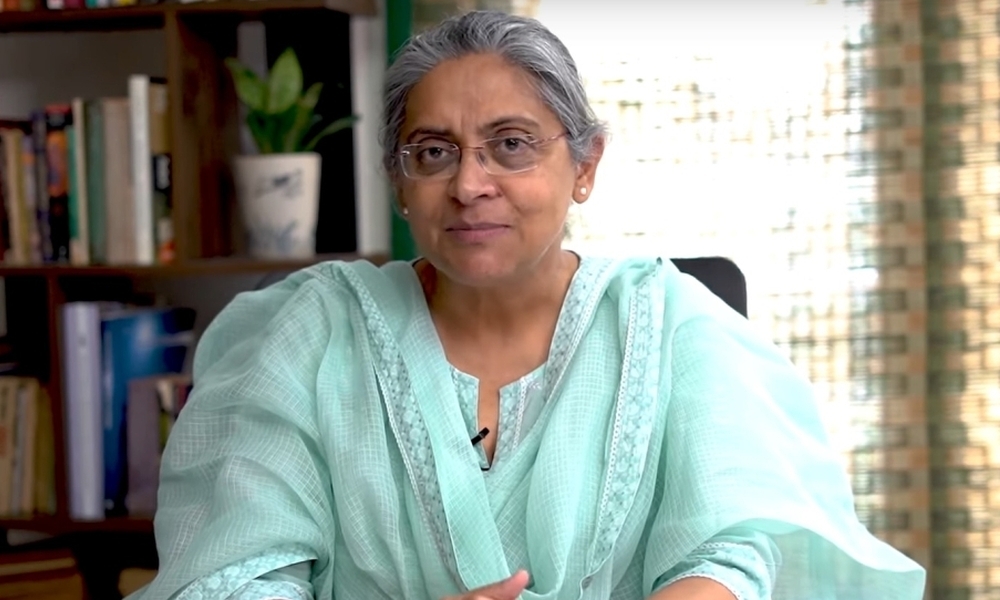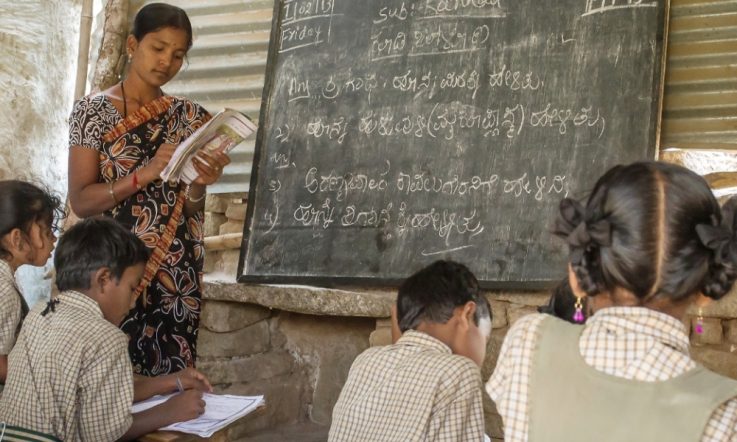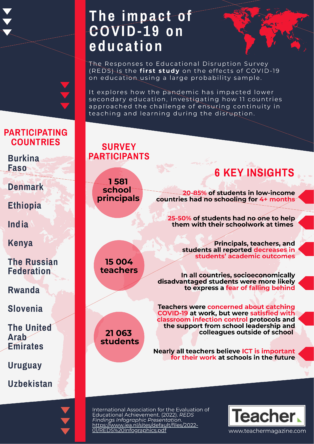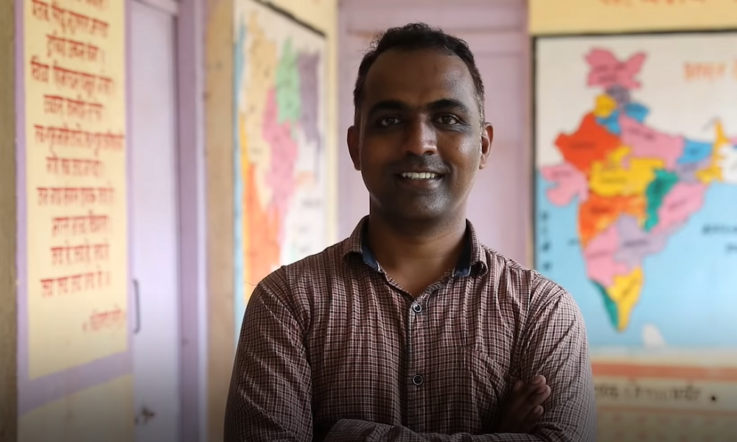Rukmini Banerji is a leading light in the world of education and at the end of last year became a recipient of the world’s highest education accolade – the Yidan Prize. The CEO of the Pratham Education Foundation was awarded the 2021 Yidan Prize for Education Development for her work in improving learning outcomes.
Announcing the award, the judges commented: ‘The Annual Status of Education Report (ASER) assessment approach, pioneered by Dr Banerji and her team, revealed literacy and numeracy gaps among children who had already spent several years at school. To close these gaps, her team's "Teaching at the Right Level" (TaRL) program works with schools and local communities to provide basic reading and arithmetic skills, ensuring no children are left behind. This systematic, replicable model reaches millions of children in India annually and is spreading around the globe.’
Since the ASER results were first published in 2005 the large-scale assessment has proved an inspiration to others, with 15 countries in South Asia, sub-Saharan Africa, and Latin America including Kenya, Mexico, and Pakistan launching similar assessments by citizen groups.
In the first of our ‘10 questions with…’ series featuring leading education figures, Editor Jo Earp talks to Dr Banerji about her work at Pratham, changes in school education in India over the years, and the urgent tasks facing teachers as they continue to support student learning during the pandemic.
Congratulations on being recognised with the 2021 Yidan Prize. What was your reaction when you were told you'd be receiving such an important accolade?
I was very surprised and at first, I almost did not believe the Yidan Prize team members when they phoned to give me the news. Once the news sank in, everyone in Pratham was ecstatic that our work had received recognition. The last two years have been difficult. Therefore, receiving this kind of good news after the second wave of COVID gave us all a huge big boost of energy.
You’ve been with Pratham for 25 years. Looking back to when you first started, what would you say has been the major change in school education in India in that time?
Twenty-five years is a long time; the education landscape in India has changed significantly in this time. In the 1990s, at every level, local, state, national or global, the focus was on getting children to school. In the last two decades, impressive strides have been made in achieving the goal of universal elementary education.
In India, school enrolment has gone up; for over 10 years, the proportion of children enrolled in school has stayed well above 95 per cent. Now the challenge is to ensure that every year of schooling translates into an additional year of learning.
Existing data show that each subsequent cohort has more children completing elementary education, but basic learning levels remain worryingly low. The New Education Policy 2020 in India recognises the ‘learning crisis’ and puts a high priority on ensuring that children acquire foundational literacy and numeracy by the time they reach Third Grade.
Acknowledging that provision of schooling is not translating into improvements in learning is a big step forward. Working actively to find ways to raise learning is another key shift and a welcome change.
You’ve also led the Annual Status of Education Report (ASER) since it first started in 2005. For readers who don’t know, can you explain what the focus of that report is?
Although ASER stands for Annual Status of Education Report, the actual word ‘aser’ in several Indian languages means ‘impact’. When we first start doing ASER in 2005, we wanted to answer two simple questions: Are all children in school? Are all children learning? We also thought that a wide range of ordinary people across the country should participate in asking these questions and seeking answers.
ASER data comes from a nationally representative sample of rural children. It is done in every rural district in the country. Children are assessed orally, one-on-one. They are asked to read letters, words, simple paragraphs and a short story. Each child is marked at the highest level that s/he can comfortably reach. Similarly, for arithmetic.
The findings for each district are then aggregated to state level. National estimates are also made available. All of this is done within 100 days and within the same school year so that current data is available for decision-making for the following year. More than 600 000 children are reached in each ASER.
I should imagine that it is a huge undertaking at the best of times; what impact has COVID-19 and the pandemic restrictions had on your work and the report?
Like many others, we at Pratham have learned how to cope with the new circumstances. Almost overnight, we had to figure out how to connect with our children and their families remotely. Once connections were established, we had to work out how to remain in constant touch with them for a long period of time.
In pre-COVID times, most of our programs had two arms – one in the school and one in the community. During the pandemic, the community interventions became even more active and vibrant.
Even though there is a long way to go, at every level, our own digital capabilities became stronger and the importance of investing in a wide range of digital content in many languages and levels became even more urgent. Across the board, there was a new openness for ideas and practices which led to new kinds of collaborations with governments and others.
All in all, through the pandemic, the ability to remain flexible, fast and frugal became even more important than ever before. (Readers can access the Pratham report on Lessons from the Pandemic for details of what we did and what we learned).
The 2021 ASER report was released some time ago. Unlike the usual ASER survey, this was a phone survey exploring learning opportunities. There have been some interesting patterns in enrolment haven’t there? What are the implications for teachers and leaders – particularly those in government schools where there’s been an increase in student numbers?
Although schools had been closed for almost two years, the rise in government school enrolment during the pandemic is an interesting fact. In all likelihood, there are several factors underlying this trend.
First, families faced difficult economic disruptions, which in turn led to cutbacks on expenditures such as private school fees. Second, rural low-cost schools found it very difficult to stay afloat during the pandemic. At the best of times, their financial model is tight. During the tough COVID times, survival for many of them was not possible. Third, in most states, government schools were able to provide inputs – like textbooks, midday meals/rations, direct cash transfers and also learning materials via WhatsApp and so on. Hence it was advantageous to be connected to government schools.
In most states across India, school size in the government sector has been shrinking. This increase in government school enrolment is being seen in a very positive light by schools. As schools open up and start functioning again, it will be interesting to track whether enrolment levels in government schools stay high.
What about schooling in rural areas? How have families and educators coped during the lockdowns and what has happened to learning?
That there has been learning loss during the prolonged period of school closure is to be expected. Empirical evidence from three state level ASER field surveys in 2021 provides actual estimates. The real challenge is what we will do once schools open and instruction starts.
With respect to parents and families, based on Pratham’s experiences on the ground during the pandemic, as well as on data available from ASER 2020 and 2021, we see that households at every level did what they could. If I can take the liberty of painting a complex and dynamic picture with broad brushstrokes, then I would say the following:
Family aspirations for children’s education have always been high. In the past, families have focused on providing the best schooling opportunity they could afford but during the pandemic parents and family members began to engage with children and learning. In urban, elite families, family participation may have taken the form of tracking online lessons with their children or downloading learning apps and helping children with content. In less educated, rural and poorer households, families engaged with WhatsApp messages that teachers or others sent, looked into worksheets and all failing leaned back on textbooks and materials that they were familiar with. ASER 2020 and 2021 data show parental support and sibling help across all categories of parental education.
All of this points to the need to leverage parental participation and family engagement and make it a permanent part of all learning improvement efforts.
The 2021 report highlights some major divides in terms of equal access to education. Access to smartphones (used when schools moved to online learning) is one of the big issues – private school students have better access, but the report makes the point that even if there’s a smartphone at home it doesn’t necessarily mean students are able to use it. Is this one of the key challenges you see for the future – that shift from accessing traditional materials like textbooks to online support and hardware?
It is important to remember that there were many inequalities in access to learning opportunities even before the pandemic. Educated parents are able to help their children learn in ways that uneducated and poorer parents cannot. It is also the case that learning levels even before COVID were worryingly low and chronically so.
As we plan for the future, the focus needs to be on how we can ensure learning for all. For that, many elements will need to reviewed – not only inputs like textbooks or devices but the entire gamut of what, why, when, where and who of teaching-learning and assessments.
Again, what implications does this have? It’s not as simple as schools shifting to online learning is it, if students and families can’t access the material?
Bring parents and families into the centre of the stage is going to be ‘key’ as we think about – How to improve children’s learning? How to engage families in an ongoing way? How to give parents who have low education the confidence and the skills to support their children’s learning journeys? How to enable parents and teachers to see each other as essential partners in their children’s learning journeys?
These are the kinds of questions we need to seek enduring and dynamic answers to. Devices, connectivity or teaching-learning materials will be parts of this overall effort.
The other issue that jumped out from the report, for me, was support from adults – so, either family support for learning during restrictions, or additional support in the form of tutors. There’s another big divide there isn’t there?
The word ‘hybrid’ has a new meaning now; it is being used to refer to digital inputs along with traditional ones. However, then even in pre-COVID times, children in India did much of their learning in a ‘mixed’ way – some of it in the classroom and some of it in different forms of non-school settings. Whether from family members or local tutors, this additional learning support has been part of the education landscape for some time. The ‘digital’ divide sits squarely on top of all the previous inequities.
Finally, then, as schools start to reopen, what should be the main priorities for teachers and leaders in terms of learning and support?
There are two clear urgent tasks. First, children currently enrolled in Grades 1 and 2 have never been to school or preschool. They need time to get ‘ready for school’, ‘ready for class’ and ‘ready for learning’ – all of which together is usually referred to as school readiness.
At least in India, making children of this age and grade deal with their usual grade-level curriculum would be a mistake which may have long-lasting, negative consequences. When constructing a building, architects and structural engineers ensure that foundations are strong. Otherwise the building cannot be a high-rise or have many floors. Similarly, with children, strong foundations are essential. Today’s cohort of early graders need time and focused effort to ensure that broad, strong and durable foundations are built as they move into formal schooling.
Second, for Grade 3 and beyond, ‘catch-up’ is needed. What kind of catch-up will depend on doing a quick assessment to see if foundational skills like reading and basic math are still in place. If not, then those are exactly the capabilities that need to be built or re-built. Once basics are back in place, then teachers and children can move on to all the other skills and subjects that school curriculums have.



